Guide to Chain Piecing: A Time-Saving Quilting Technique
Are you ready to dive into the world of quilting with a technique that can revolutionize your sewing experience? Chain piecing is not just a method; it's a game-changer for quilters looking to enhance their efficiency and precision. Imagine being able to sew multiple fabric pieces without the constant interruption of cutting threads. Sounds dreamy, right? This article will explore the art of chain piecing, revealing tips, benefits, and techniques that can streamline your quilting projects and save you precious time.
Chain piecing is a sewing technique where multiple pieces of fabric are sewn together in a continuous chain. Picture this: instead of stopping to cut your thread after every single piece, you keep sewing, creating a lovely chain of fabric. This method minimizes thread cutting and significantly increases your sewing speed, making it a favorite among seasoned quilters and newcomers alike. By keeping your pieces connected, you can focus on the joy of sewing rather than the tediousness of thread management.
So, why should you consider incorporating chain piecing into your quilting routine? The benefits are numerous and can truly transform your quilting experience. Here are some of the standout advantages:
- Reduced Sewing Time: Chain piecing allows you to sew multiple pieces in succession, enabling you to complete projects more quickly without sacrificing quality.
- Improved Accuracy: The technique promotes consistent stitching, leading to more uniform seams and a polished final product.
- Less Fabric Waste: By minimizing the need for cutting threads, you reduce the chance of fabric shifting, which can lead to waste and inaccuracies.
One of the primary benefits of chain piecing is its ability to save time. Imagine being able to finish a quilt top in half the time it usually takes you. By sewing multiple pieces in succession, quilters can complete projects more quickly, making it an ideal technique for those who juggle busy schedules. It's like having a secret weapon in your quilting arsenal that allows you to focus on creativity rather than getting bogged down by tedious tasks.
With chain piecing, the need for frequent thread cutting is eliminated. This not only speeds up the process but also reduces the risk of fabric shifting during sewing. Think of it as a smooth ride on a well-paved road compared to the bumpy ride of constantly stopping and starting. The fewer interruptions you have, the more fluid your sewing experience becomes!
Another fantastic benefit of chain piecing is that it promotes consistent stitching. Since the fabric pieces remain aligned throughout the process, you achieve more uniform seams. This leads to a polished final product that looks professional and well-crafted. It's like cooking a great dish; when all the ingredients are mixed together perfectly, the result is a delightful meal. In quilting, consistent stitching is the secret ingredient to a beautiful quilt!
Mastering chain piecing is straightforward, and once you get the hang of it, you'll wonder how you ever quilted without it! Start by gathering your fabric pieces and arranging them in the order you want to sew them. Next, set your sewing machine to a comfortable speed. Begin sewing the first piece, and as you finish, simply feed the next piece into the machine without cutting the thread. Continue this process until all pieces are sewn together. It's a simple yet effective method that can turn your quilting projects into a breeze!
While chain piecing is beneficial, there are common pitfalls to be aware of. Here are some mistakes that quilters often make and tips to avoid them for a successful outcome:
Proper fabric alignment is crucial in chain piecing. Ignoring this can lead to misaligned seams, which can affect the overall quality of your quilt. Always take a moment to ensure that your pieces are lined up correctly before you start sewing.
Attempting to sew too many pieces at once can overwhelm your sewing machine. It's essential to gauge the right amount of fabric for optimal performance and results. Think of it like a car; if you overload it, it won't run as smoothly. Keep your sewing machine happy by knowing its limits!
Having the right tools can enhance your chain piecing experience. Essential supplies include:
- A reliable sewing machine with a good feed system.
- Thread that matches your fabric.
- Sharp needles suitable for quilting.
- A rotary cutter and mat for precise cutting.
With these tools in hand, you're ready to embark on your chain piecing journey!
1. Can I chain piece with any fabric type?
Yes, chain piecing works well with most fabric types, but it's best to use quilting cotton for beginners.
2. How do I know when to cut the threads?
Cut the threads when you have finished sewing all the pieces in your chain. This will give you a continuous strip of sewn fabric.
3. Is chain piecing suitable for beginners?
Absolutely! Chain piecing is an excellent technique for beginners, as it helps build confidence and speed in sewing.
4. What if my fabric shifts while chain piecing?
Ensure that your fabric is properly aligned before starting and consider using a leader fabric to help guide the pieces through the machine.

What is Chain Piecing?
This article explores the art of chain piecing, a quilting method that enhances efficiency and precision. Discover tips, benefits, and techniques to streamline your quilting projects and save valuable time.
Chain piecing is a sewing technique where multiple pieces of fabric are sewn together in a continuous chain. Imagine a train of fabric pieces, each linked together as they glide through your sewing machine. This method minimizes thread cutting and increases sewing speed, making it a favorite among quilters. By keeping the fabric pieces connected, quilters can move swiftly from one section to another, allowing for a more fluid and enjoyable sewing experience.
When you engage in chain piecing, you set yourself up for a more organized workspace. Instead of constantly cutting threads and rearranging your fabric, you can focus on the rhythm of sewing. This technique is not only about speed; it also enhances the overall quality of your work. By maintaining the alignment of your fabric pieces, you promote consistent stitching, which ultimately results in a polished final product.
To better understand the process, let’s break it down into a few simple steps:
- Start with a stack of fabric pieces cut to your desired dimensions.
- Feed the first piece through your sewing machine, followed immediately by the next piece without cutting the thread.
- Continue this process until all pieces are sewn together in a chain.
- Once completed, cut the threads between each piece, and you’ll have a series of neatly sewn fabric segments ready for further assembly.
In essence, chain piecing is a game-changer for quilters looking to maximize their productivity without compromising quality. Whether you’re working on a quilt, a patchwork project, or any other fabric creation, this technique can significantly streamline your workflow. It’s like having a secret weapon in your quilting arsenal, allowing you to tackle larger projects with ease and confidence.
Chain piecing offers numerous advantages, including reduced sewing time, improved accuracy, and less fabric waste. Learn how this technique can transform your quilting experience and enhance the quality of your projects.
One of the primary benefits of chain piecing is its ability to save time. By sewing multiple pieces in succession, quilters can complete projects more quickly without sacrificing quality.
With chain piecing, the need for frequent thread cutting is eliminated. This not only speeds up the process but also reduces the risk of fabric shifting during sewing.
Chain piecing promotes consistent stitching, as the fabric pieces remain aligned throughout the process. This leads to more uniform seams and a polished final product.
Mastering chain piecing is straightforward. This section outlines the steps to effectively implement this technique in your quilting projects, ensuring a smooth and enjoyable sewing experience.
While chain piecing is beneficial, there are common pitfalls to be aware of. This section highlights mistakes that quilters often make and offers tips to avoid them for a successful outcome.
Proper fabric alignment is crucial in chain piecing. Ignoring this can lead to misaligned seams, which can affect the overall quality of your quilt.
Attempting to sew too many pieces at once can overwhelm your sewing machine. Learn how to gauge the right amount of fabric for optimal performance and results.
Having the right tools can enhance your chain piecing experience. This section discusses essential supplies needed for successful chain piecing, ensuring efficiency and ease in your quilting projects.
Q: What types of projects are best suited for chain piecing?
A: Chain piecing is ideal for any project that involves multiple pieces of fabric, such as quilts, patchwork, and even clothing. If you're working with blocks or strips, this method can significantly speed up your process.
Q: Do I need a special sewing machine for chain piecing?
A: No special machine is required! Any standard sewing machine will work well for chain piecing. Just ensure that it has a consistent stitch length and a reliable feed mechanism.
Q: Can I chain piece with different fabric types?
A: Absolutely! You can chain piece a variety of fabric types, but be mindful of their thickness and stretch. Mixing fabrics can add interesting texture and design to your projects.
Q: How do I keep track of my pieces while chain piecing?
A: It’s helpful to have a designated space for each type of fabric piece. You can use small bins or trays to separate them, ensuring you don’t lose track of what you’re working on.
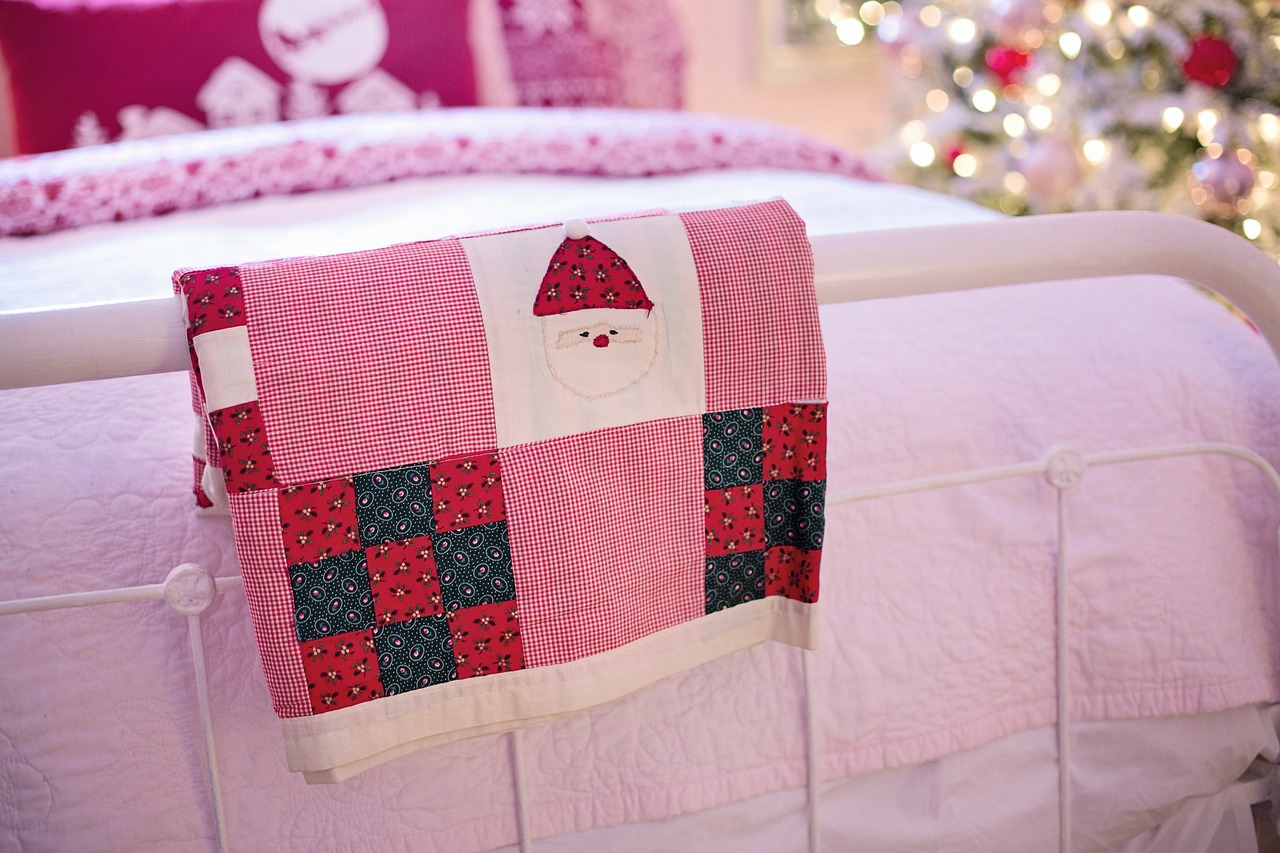
Benefits of Chain Piecing
This article explores the art of chain piecing, a quilting method that enhances efficiency and precision. Discover tips, benefits, and techniques to streamline your quilting projects and save valuable time.
Chain piecing is a sewing technique where multiple pieces of fabric are sewn together in a continuous chain. This method minimizes thread cutting and increases sewing speed, making it a favorite among quilters.
Chain piecing offers numerous advantages that can significantly enhance your quilting experience. First and foremost, it dramatically reduces the time spent on sewing projects. Imagine being able to complete a quilt top in half the time it normally takes! By sewing several pieces in succession, you can keep your momentum going, making the process not only faster but also more enjoyable.
Another remarkable benefit is the improvement in accuracy. When you chain piece, the fabric pieces are held together, which helps maintain their alignment. This leads to more uniform seams, reducing the chances of having to rip out stitches later due to misalignment. In essence, chain piecing can be thought of as a safety net for your fabric, ensuring that everything stays in place while you sew.
Moreover, chain piecing minimizes fabric waste. When you cut your threads between each piece, you often end up with small snippets of thread that can be discarded. However, with chain piecing, the continuous sewing reduces the amount of thread that gets cut, allowing you to use more of your fabric efficiently. This is not only good for your wallet but also great for the environment, as less waste means a more sustainable quilting practice.
One of the primary benefits of chain piecing is its ability to save time. By sewing multiple pieces in succession, quilters can complete projects more quickly without sacrificing quality. Think of it like a factory assembly line; the more pieces you can assemble at once, the faster you can produce a finished product.
With chain piecing, the need for frequent thread cutting is eliminated. This not only speeds up the process but also reduces the risk of fabric shifting during sewing. Fewer interruptions mean you can focus more on your quilting and less on the tedious task of cutting threads.
Chain piecing promotes consistent stitching, as the fabric pieces remain aligned throughout the process. This leads to more uniform seams and a polished final product. You know that feeling when everything just clicks? That's what consistent stitching brings to your quilting projects!
Mastering chain piecing is straightforward. This section outlines the steps to effectively implement this technique in your quilting projects, ensuring a smooth and enjoyable sewing experience.
While chain piecing is beneficial, there are common pitfalls to be aware of. This section highlights mistakes that quilters often make and offers tips to avoid them for a successful outcome.
Proper fabric alignment is crucial in chain piecing. Ignoring this can lead to misaligned seams, which can affect the overall quality of your quilt.
Attempting to sew too many pieces at once can overwhelm your sewing machine. Learn how to gauge the right amount of fabric for optimal performance and results.
Having the right tools can enhance your chain piecing experience. This section discusses essential supplies needed for successful chain piecing, ensuring efficiency and ease in your quilting projects.
- What is the best fabric for chain piecing? Generally, quilting cotton is recommended due to its durability and ease of handling.
- Can I chain piece with different fabric types? Yes, but be mindful of the thickness and texture differences, as they may affect the final outcome.
- How do I prevent fabric jams while chain piecing? Ensure your sewing machine is properly threaded and avoid overloading it with too many pieces at once.
- Is chain piecing suitable for beginners? Absolutely! It's a great way for beginners to practice sewing while improving efficiency.
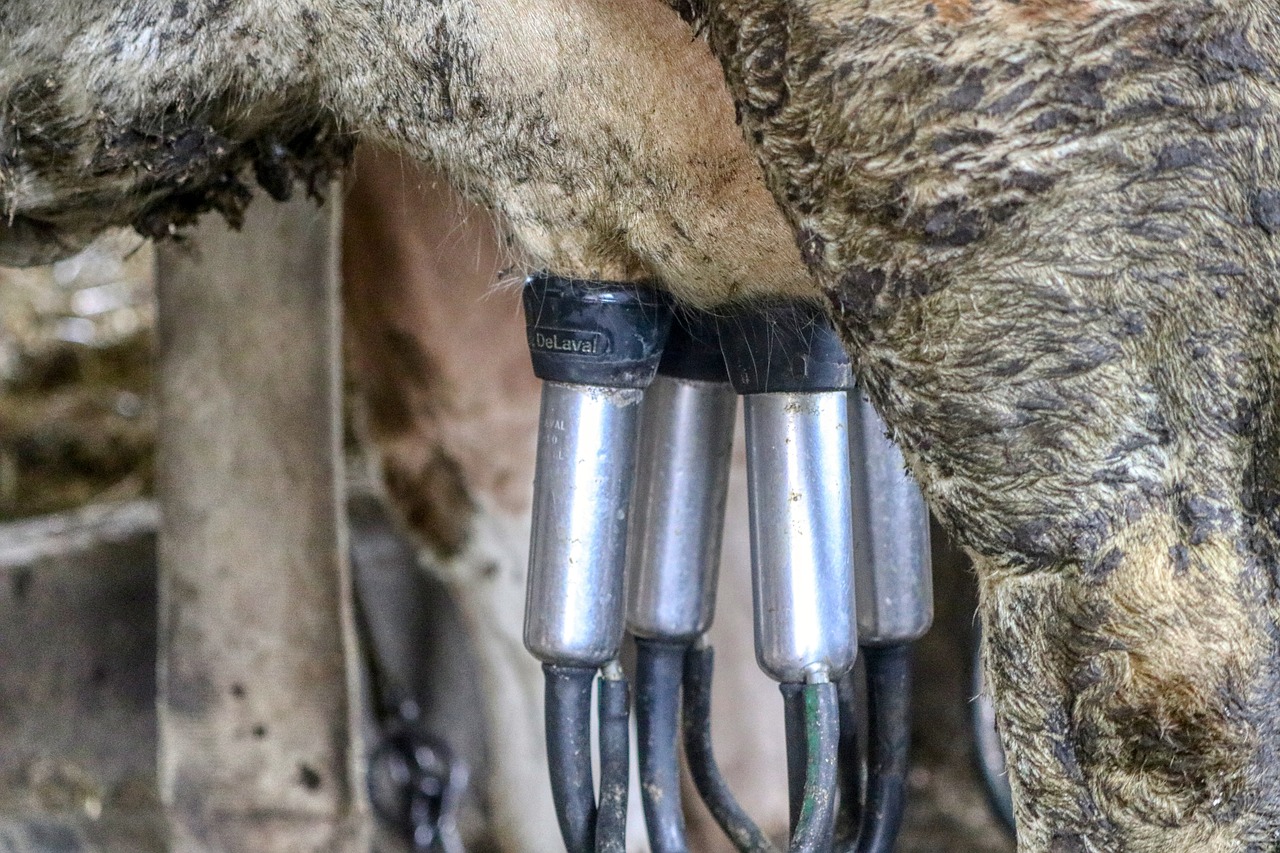
Time Efficiency
When it comes to quilting, time is often of the essence. Chain piecing is a game-changer in this regard. Imagine sitting down with a pile of fabric, ready to create something beautiful, but feeling daunted by the time it might take. With chain piecing, you can transform that daunting task into a quick and enjoyable experience. This technique allows you to sew multiple pieces of fabric in one continuous line, significantly reducing the overall time spent on your project.
By sewing several pieces together in a chain rather than individually, quilters can effectively double or even triple their productivity. Think of it like assembling a puzzle; when you focus on connecting several pieces at once, you see progress much faster than if you were to complete each piece one by one. The beauty of chain piecing lies in its efficiency—you can create a stunning quilt without feeling overwhelmed by the process.
Moreover, this method not only speeds up your sewing but also enhances your overall workflow. By minimizing interruptions for thread cutting and fabric adjustments, you can maintain a steady rhythm. This rhythm is crucial in quilting, as it helps keep your focus sharp and your creativity flowing. Just consider the time you save on each project:
| Traditional Method | Chain Piecing | Time Saved |
|---|---|---|
| Individual sewing of 10 pieces | Continuous sewing of 10 pieces | Up to 30% faster |
| Thread cutting after each piece | No thread cutting until the end | Significant time reduction |
In addition to saving time, chain piecing allows you to tackle larger projects without the usual fatigue that comes from constant stopping and starting. You’ll find yourself less likely to lose momentum, which can often lead to procrastination on sewing tasks. Instead of feeling like you're climbing a mountain, you’ll feel like you’re cruising down a hill, picking up speed as you go.
So, if you’re looking to make the most of your quilting time, chain piecing is the way to go. Not only does it enhance your productivity, but it also makes the entire process more enjoyable. You'll be amazed at how much you can accomplish in a shorter period, leaving you with more time to enjoy the finished product or start on your next creative endeavor!
- What is chain piecing? Chain piecing is a sewing technique where multiple pieces of fabric are sewn together in a continuous chain, minimizing thread cutting and increasing efficiency.
- How does chain piecing save time? By allowing quilters to sew multiple pieces in succession, it reduces the need for frequent interruptions, making the process faster.
- Are there any mistakes to avoid when chain piecing? Yes, common mistakes include ignoring fabric alignment and overloading the sewing machine.
- What tools do I need for chain piecing? Essential tools include a sewing machine, rotary cutter, cutting mat, and quality fabric scissors.
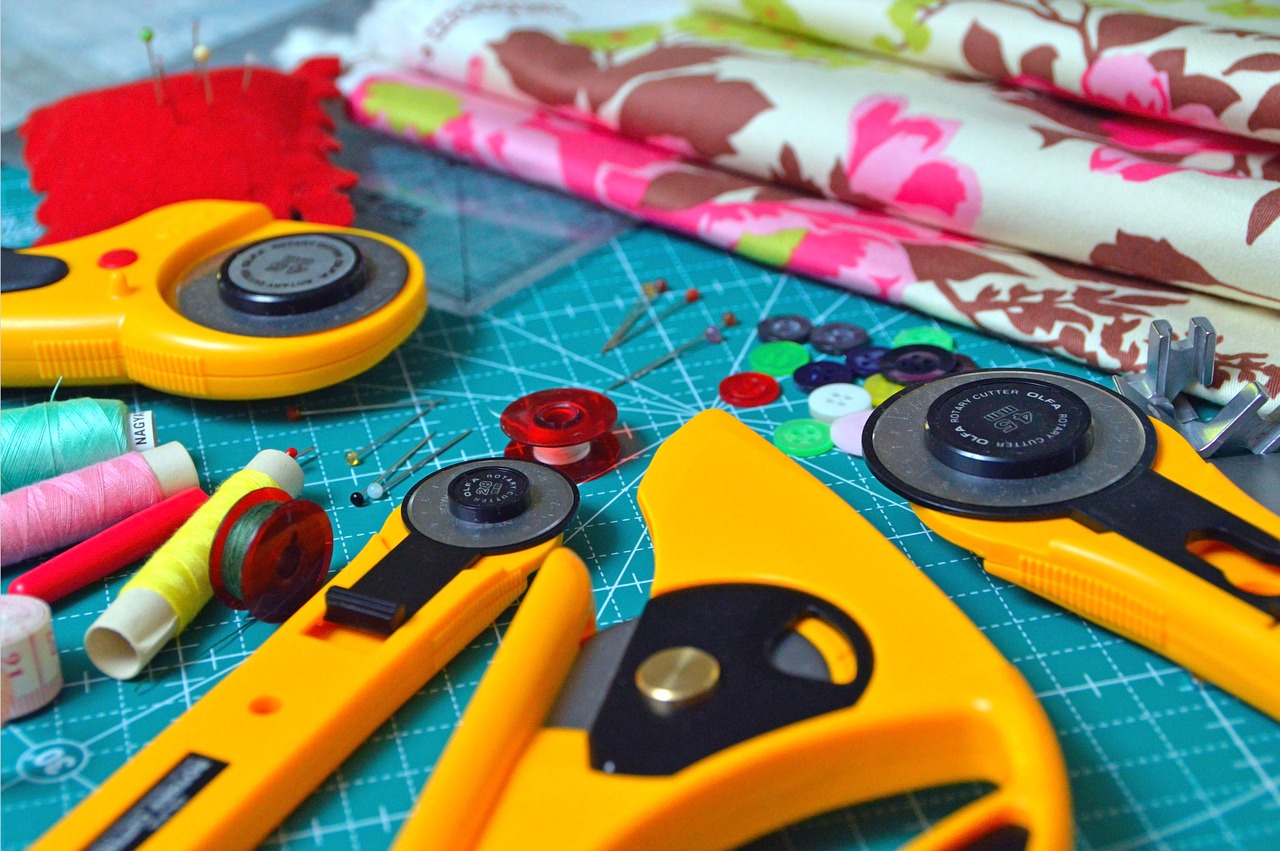
Less Thread Cutting
One of the standout features of chain piecing is the significant reduction in thread cutting, which can be a game-changer for quilters. Imagine this: instead of stopping to cut your thread after every single piece, you can keep your sewing machine humming along, creating a continuous flow of beautiful seams. This not only speeds up your overall sewing process but also minimizes the interruptions that can disrupt your creative flow. When you sew multiple pieces in a chain, you’re essentially creating a seamless assembly line right at your sewing station.
Moreover, less thread cutting means fewer chances for fabric to shift or get misaligned. When you cut the thread frequently, there’s a risk that the fabric pieces can move, leading to uneven seams that can throw off the entire quilt’s design. With chain piecing, the pieces stay in place, allowing for more precise alignment and consistent stitching. This is especially important when working with intricate patterns or when you want to ensure that your quilt has a professional finish.
To give you a clearer picture of how this works, consider the following comparison:
| Traditional Sewing | Chain Piecing |
|---|---|
| Frequent thread cutting | Minimal thread cutting |
| More interruptions | Continuous sewing flow |
| Higher risk of misalignment | Better alignment and accuracy |
| Longer project completion time | Faster project completion time |
As you can see, the benefits of chain piecing in terms of reducing thread cutting are numerous. Not only does it enhance your efficiency, but it also contributes to a more enjoyable quilting experience. You can focus on your design and creativity rather than getting bogged down by repetitive tasks. So, the next time you sit down to quilt, consider how chain piecing can transform your process and help you achieve that perfect quilt with less hassle.
- What is chain piecing? Chain piecing is a sewing technique where multiple pieces of fabric are sewn together in a continuous chain without cutting the thread between them.
- How does chain piecing save time? By allowing quilters to sew multiple pieces in succession, chain piecing eliminates the need for frequent thread cutting, which speeds up the overall sewing process.
- Can I use chain piecing for all quilting projects? Yes! Chain piecing is versatile and can be applied to various quilting projects, especially those involving repetitive patterns.
- What tools do I need for chain piecing? Basic sewing supplies such as a sewing machine, rotary cutter, cutting mat, and fabric are essential. Optional tools include a design wall for layout and clips for holding fabric pieces together.
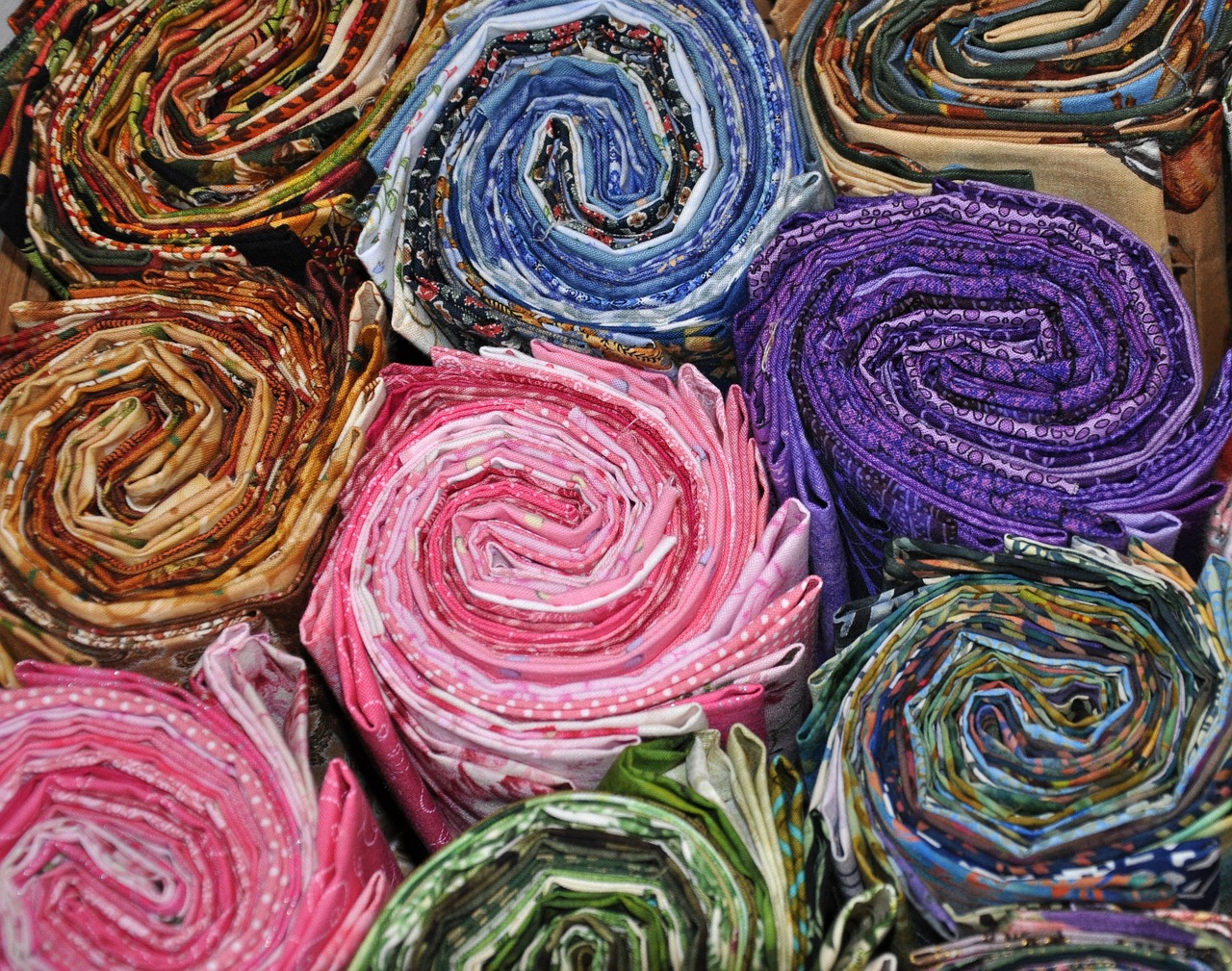
Consistent Stitching
One of the standout benefits of chain piecing is the promotion of . When you sew multiple pieces of fabric together in a continuous chain, you create a seamless flow that keeps everything aligned. Imagine a well-choreographed dance, where every step is in sync; that's what chain piecing does for your quilting. The fabric pieces remain in position, which means your seams are more likely to be uniform and precise.
This consistency is crucial, especially when you're working on larger projects where precision matters. If you've ever experienced the frustration of uneven seams, you know how it can affect the overall quality of your quilt. With chain piecing, you're not just sewing; you're crafting a masterpiece where each stitch contributes to the final design. The alignment ensures that your fabric doesn’t shift as you sew, which can often lead to those pesky misaligned seams that are the bane of many quilters' existence.
Moreover, consistent stitching enhances the durability of your quilt. When seams are uniform, they distribute stress evenly across the fabric, reducing the likelihood of fabric fraying or seams coming apart over time. So, not only does chain piecing improve the aesthetic quality of your quilt, but it also contributes to its longevity. In essence, this technique is like a solid foundation for a house; without it, everything else is at risk of crumbling.
To ensure you achieve this level of consistency, here are a few tips:
- Use a quarter-inch foot: This specialized presser foot helps maintain the correct seam allowance, ensuring uniformity across all your pieces.
- Keep your fabric edges aligned: As you feed your fabric through the machine, make sure the edges are perfectly aligned. This practice will help prevent any shifting.
- Practice your speed: Finding the right sewing speed can make a world of difference. Too fast, and you risk misalignment; too slow, and you may lose the rhythm of chain piecing.
In conclusion, consistent stitching is a game changer in the world of quilting. By embracing chain piecing, you not only save time but also elevate the quality of your work. So, the next time you sit down to quilt, remember that every stitch counts, and with chain piecing, you’re on your way to creating beautiful, lasting pieces that you can be proud of.
Q: What is chain piecing?
A: Chain piecing is a sewing technique where multiple pieces of fabric are sewn together in a continuous chain, minimizing thread cutting and enhancing sewing speed.
Q: How does chain piecing save time?
A: By sewing multiple pieces in succession, quilters can complete projects faster without compromising quality, as there's less interruption for thread cutting.
Q: What tools do I need for chain piecing?
A: Essential tools include a sewing machine, a quarter-inch presser foot, and an accurate cutting mat to ensure precise fabric alignment.
Q: Can I chain piece with any fabric?
A: Yes, chain piecing can be done with various types of fabric, but it's best to use fabrics that have similar weights and textures for optimal results.
Q: What are common mistakes to avoid while chain piecing?
A: Common mistakes include ignoring fabric alignment and overloading the sewing machine with too many pieces at once, which can lead to misaligned seams.
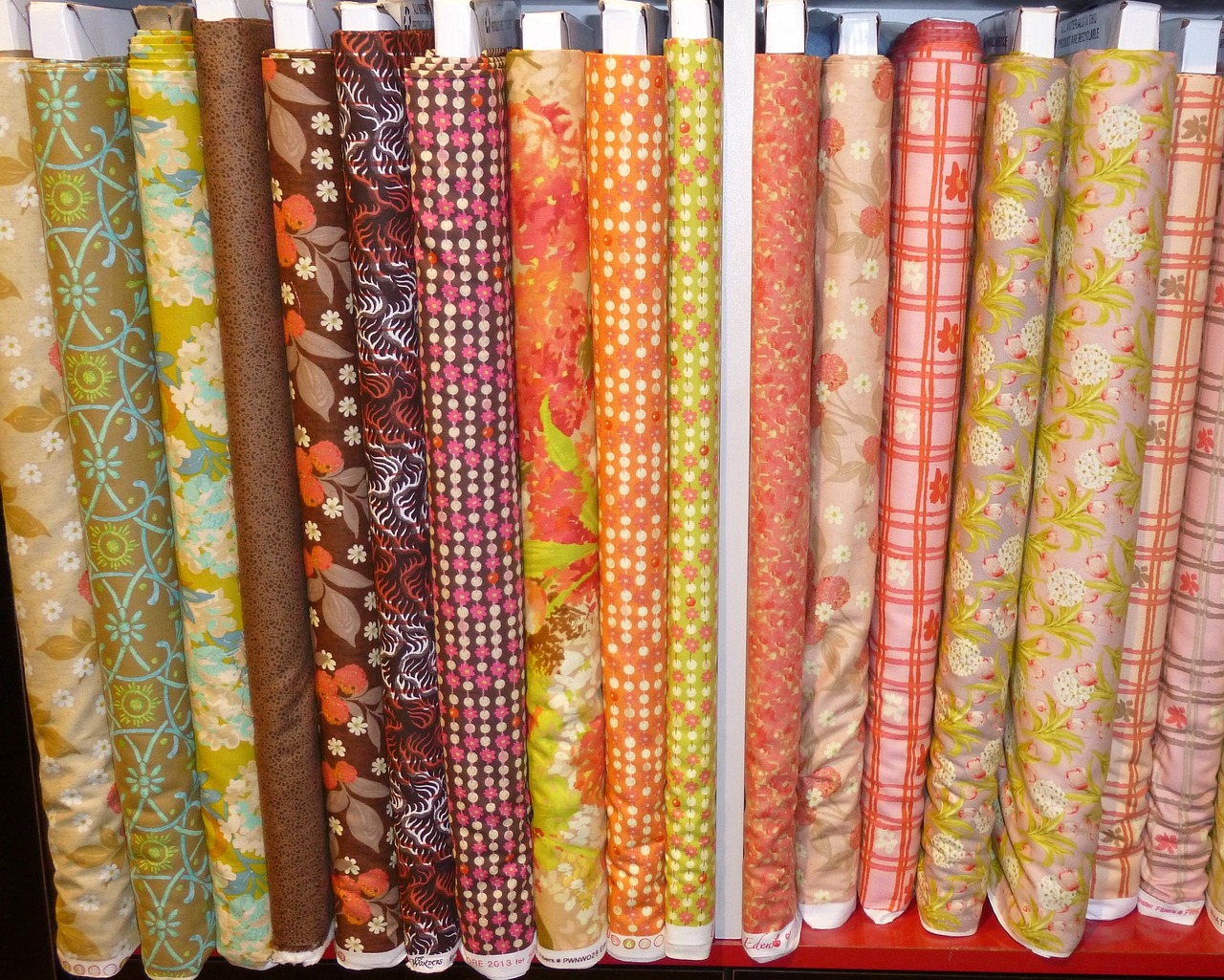
How to Chain Piece
Mastering chain piecing is not only about technique; it’s about embracing a more efficient way to create beautiful quilts. To get started, gather your fabric pieces, thread, and sewing machine. The first step is to prepare your fabric. Make sure all your fabric pieces are cut to the correct size and are ready to go. Lay them out in the order you plan to sew them; this will help you stay organized and minimize confusion as you work. It’s like setting the stage before a big performance—everything needs to be in its place for the show to go smoothly!
Next, set up your sewing machine. Ensure that your machine is threaded properly and that you have the right needle for your fabric type. A universal needle works well for most quilting projects, but if you’re working with heavier fabrics, consider using a heavier needle to avoid breakage. Once your machine is ready, it’s time to start sewing!
Begin by placing the first two pieces of fabric right sides together under the presser foot. Lower the foot and start sewing, but instead of cutting the thread after you finish, simply let the fabric feed into the machine and place the next piece of fabric right behind it. This is where the magic of chain piecing happens! You’re creating a continuous chain of fabric pieces without the need to cut the thread in between. It’s like a conga line of fabric, moving together in harmony!
As you sew, keep an eye on the alignment of your pieces. Proper alignment is key to achieving uniform seams. If you notice any fabric shifting, gently guide it back into place without pulling too hard, as this can cause uneven stitching. Once you’ve sewn all your pieces together, you can cut the thread between each section, giving you a series of sewn pieces that are ready for pressing.
After sewing, it’s essential to press your seams correctly. Use an iron to press the seams open or to one side, depending on your pattern requirements. This step is crucial because it helps to set the stitches and ensures that your quilt lies flat. Think of it as giving your quilt a nice, tidy haircut—everything looks better when it’s neat and organized!
Finally, remember to take breaks as needed. Chain piecing can be fast-paced, but don’t rush the process. Enjoy the rhythm of sewing, and don’t hesitate to step back, reassess, and appreciate the progress you’ve made. Quilting is an art, and like any artist, you want to enjoy the journey as much as the destination!
In summary, chain piecing can transform your quilting projects into a more enjoyable and efficient process. By preparing your fabric, setting up your machine, maintaining proper alignment, and pressing your seams, you’ll be well on your way to creating beautiful quilts in no time!
Q: Can I chain piece with different fabric types?
A: Yes, you can chain piece with different fabric types, but ensure that they are compatible in terms of weight and texture for the best results.
Q: How do I handle fabric that shifts while chain piecing?
A: If your fabric shifts, gently guide it back into place without pulling too hard. You can also use a leader strip—a small piece of fabric at the beginning of your chain—to help stabilize the fabric.
Q: What is the best way to cut the threads between pieces?
A: Use a pair of scissors or a rotary cutter to cut the threads between the pieces after you’ve finished sewing. This allows for easy separation of the sewn sections.
Q: Is chain piecing suitable for beginners?
A: Absolutely! Chain piecing is a great technique for beginners as it helps build confidence and speed in sewing while producing beautiful results.

Common Mistakes to Avoid
While chain piecing can significantly enhance your quilting efficiency, it’s not without its pitfalls. Understanding the common mistakes that quilters make can save you from frustration and wasted fabric. One of the most significant errors is ignoring fabric alignment. When you chain piece, each piece of fabric needs to be perfectly aligned with the others. If you overlook this crucial step, you might end up with misaligned seams, which can seriously compromise the overall quality of your quilt. Imagine spending hours on a project, only to discover that your seams don’t match up—it's a heart-wrenching scenario!
Another mistake to steer clear of is overloading your sewing machine. It might be tempting to sew as many pieces as possible in one go, but this can overwhelm your machine and lead to uneven stitching or even mechanical issues. Instead, gauge the right amount of fabric for your machine’s capabilities. A good rule of thumb is to start with a manageable number of pieces and gradually increase as you become more comfortable with the technique. Think of your sewing machine as a car; if you push it too hard, it might stall or break down!
Additionally, many quilters forget to check their thread tension before diving into chain piecing. Incorrect tension can lead to puckering or loose stitches, ruining the beautiful fabric you’ve chosen. Before you start, take a moment to test your tension on a scrap piece of fabric. This simple step can save you a lot of headaches down the road.
Finally, don’t underestimate the importance of taking breaks. Chain piecing can be an exhilarating experience, but it can also lead to fatigue. When your mind and body are tired, mistakes are more likely to happen. Set a timer to remind yourself to take short breaks, stretch, and refocus. After all, quilting should be a joyful experience, not a race!
By being mindful of these common mistakes, you can ensure a smoother and more enjoyable chain piecing experience. Remember, it’s all about practice and patience. The more you sew, the more intuitive the process will become!
1. What is chain piecing?
Chain piecing is a sewing technique where multiple pieces of fabric are sewn together in a continuous chain, minimizing thread cutting and increasing speed.
2. Can chain piecing be used for all quilting projects?
Yes, chain piecing can be adapted to a variety of quilting projects, especially those that involve repetitive patterns or blocks.
3. What tools do I need for chain piecing?
Essential tools include a sewing machine, rotary cutter, cutting mat, and a good quality ruler for accurate measurements.
4. How can I avoid fabric shifting while chain piecing?
To minimize fabric shifting, ensure proper alignment and use a leader fabric if necessary. Additionally, maintaining consistent speed while sewing can help.
5. Is chain piecing suitable for beginners?
Absolutely! Chain piecing is a great technique for beginners as it simplifies the sewing process and helps build confidence.
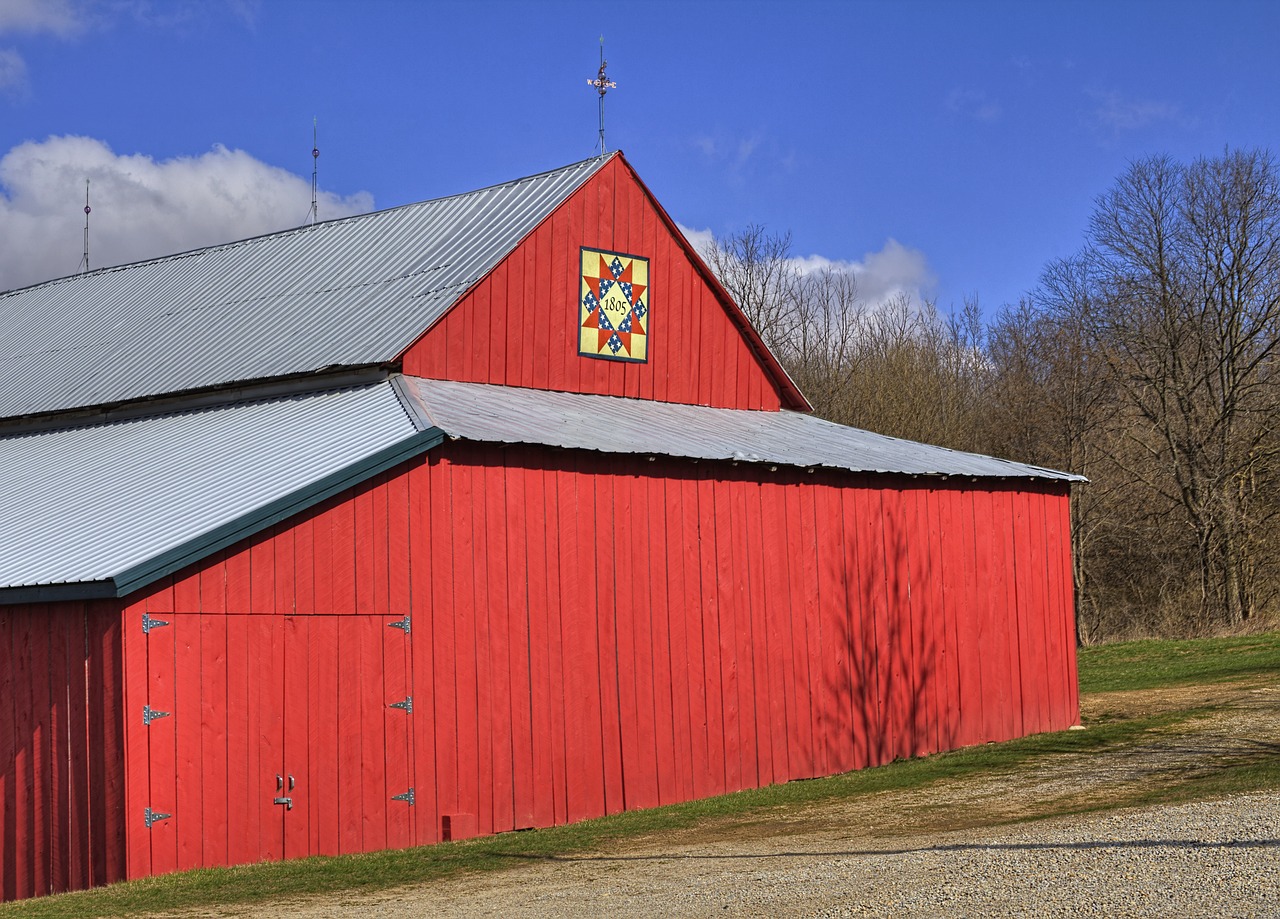
Ignoring Fabric Alignment
This article explores the art of chain piecing, a quilting method that enhances efficiency and precision. Discover tips, benefits, and techniques to streamline your quilting projects and save valuable time.
Chain piecing is a sewing technique where multiple pieces of fabric are sewn together in a continuous chain. This method minimizes thread cutting and increases sewing speed, making it a favorite among quilters.
Chain piecing offers numerous advantages, including reduced sewing time, improved accuracy, and less fabric waste. Learn how this technique can transform your quilting experience and enhance the quality of your projects.
One of the primary benefits of chain piecing is its ability to save time. By sewing multiple pieces in succession, quilters can complete projects more quickly without sacrificing quality.
With chain piecing, the need for frequent thread cutting is eliminated. This not only speeds up the process but also reduces the risk of fabric shifting during sewing.
Chain piecing promotes consistent stitching, as the fabric pieces remain aligned throughout the process. This leads to more uniform seams and a polished final product.
Mastering chain piecing is straightforward. This section outlines the steps to effectively implement this technique in your quilting projects, ensuring a smooth and enjoyable sewing experience.
While chain piecing is beneficial, there are common pitfalls to be aware of. This section highlights mistakes that quilters often make and offers tips to avoid them for a successful outcome.
One of the most critical aspects of successful chain piecing is paying attention to fabric alignment. Ignoring this vital step can lead to misaligned seams, which ultimately affects the overall quality of your quilt. Imagine trying to build a house on a shaky foundation; the same principle applies to quilting. If your fabric pieces aren’t aligned correctly, you’ll end up with uneven seams that can ruin the aesthetic of your quilt.
To ensure proper alignment, always take the time to lay out your fabric pieces before you start sewing. This practice allows you to visualize how they will come together, making it easier to spot any potential misalignments. Additionally, consider using tools such as fabric weights or clips to hold your pieces in place while you sew. This will help maintain their position and prevent any unwanted shifting as you work.
Here are a few tips to keep in mind regarding fabric alignment:
- Check the Grain: Always align your fabric according to the grain to prevent distortion.
- Use a Guide: Utilize the lines on your sewing machine's throat plate as a guide for straight stitching.
- Pinning: Don’t hesitate to use pins to secure pieces, especially for larger sections.
By focusing on fabric alignment, you will not only improve the quality of your seams but also enhance the overall look of your finished quilt. Remember, a little extra attention at this stage can save you time and frustration later on!
Attempting to sew too many pieces at once can overwhelm your sewing machine. Learn how to gauge the right amount of fabric for optimal performance and results.
Having the right tools can enhance your chain piecing experience. This section discusses essential supplies needed for successful chain piecing, ensuring efficiency and ease in your quilting projects.
Q: What is chain piecing?
A: Chain piecing is a sewing method where multiple fabric pieces are sewn together in a continuous chain, minimizing thread cutting and increasing efficiency.
Q: How can I improve my fabric alignment?
A: Always lay out your fabric pieces before sewing, use fabric weights or clips, and check the grain to ensure proper alignment.
Q: What are the benefits of chain piecing?
A: Chain piecing saves time, reduces thread cutting, and promotes consistent stitching, leading to a more polished final product.

Overloading the Machine
When diving into the world of chain piecing, one of the most common pitfalls quilters encounter is overloading the sewing machine. It’s tempting to think that the more pieces you can sew at once, the faster you’ll complete your project. However, this mindset can lead to a host of problems that may ultimately slow you down instead. Imagine trying to fit an entire pizza into a toaster oven; it just doesn’t work that way. Your sewing machine has its limits, and exceeding them can result in frustrating jams, uneven stitches, and even damage to the machine itself.
To avoid overloading, it's essential to gauge the right amount of fabric to sew at a time. Here are a few tips to keep in mind:
- Know Your Machine: Different machines have varying capabilities. Refer to your manual to understand the recommended fabric thickness and quantity.
- Test Runs: Before embarking on a large project, do a quick test run with a few pieces to see how your machine handles the workload.
- Stay Attentive: Keep an eye on your machine while sewing. If you notice it struggling, it’s a sign to reduce the number of pieces.
By being mindful of your machine's limits, you not only ensure a smoother sewing experience but also maintain the quality of your work. Remember, it’s not just about speed; it’s about achieving a beautiful quilt that you can be proud of. So, take a step back, assess your workload, and let your sewing machine do its best work without feeling overwhelmed.
Q: What is the ideal number of pieces to chain piece at once?
A: The ideal number varies by machine and fabric type, but starting with 3-5 pieces is often a good rule of thumb. Adjust based on your machine’s performance.
Q: Can I chain piece with different fabric types?
A: Yes, but ensure that the thickness and weight are compatible to avoid issues with tension and stitching.
Q: What should I do if my machine jams while chain piecing?
A: Stop sewing immediately, remove the fabric gently, and check for any tangled threads. Clean the machine if needed, and then resume sewing at a slower pace.
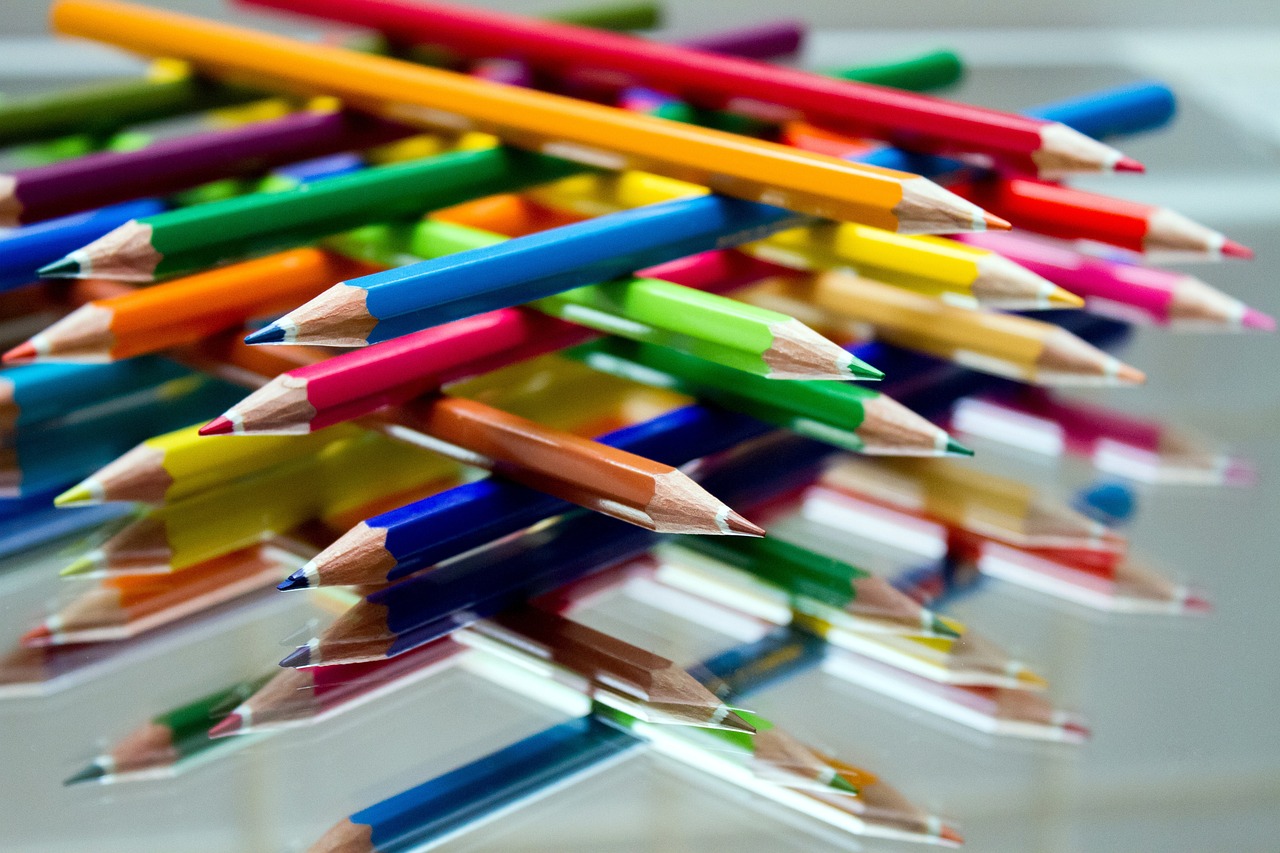
Tools and Supplies for Chain Piecing
When diving into the world of chain piecing, having the right tools and supplies can make all the difference in your quilting experience. Think of your sewing machine as your trusty steed, ready to gallop through fabric with ease and precision. But just like any great adventure, it’s essential to equip yourself properly. So, what do you need to make your chain piecing journey smooth and enjoyable?
First and foremost, a reliable sewing machine is a must. Look for one that offers a consistent stitch length and speed control. This will help you maintain the rhythm of chain piecing without any hiccups. Additionally, a quarter-inch foot is invaluable for ensuring that your seams are perfectly aligned, which is crucial for achieving that professional finish.
Next up, consider investing in a good quality rotary cutter and cutting mat. These tools will allow you to cut your fabric pieces accurately and efficiently, setting the stage for a successful chain piecing session. A ruler is also essential for measuring and cutting straight lines, helping to keep your pieces uniform and consistent.
Don’t forget about pins! While chain piecing minimizes the need for pinning, having a stash of fine pins can still be beneficial, especially when working with smaller pieces or intricate designs. They help keep your fabric layers in place and prevent any unwanted shifting as you sew.
Another important tool to have on hand is a seam ripper. Even the best quilters make mistakes, and having this handy tool can save you a lot of heartache when you need to undo a seam. It’s like having an eraser for your sewing projects!
Finally, consider using a design wall. This is a fantastic way to lay out your pieces before you start sewing. It allows you to visualize your quilt and make any necessary adjustments to the layout. A design wall can be as simple as a large piece of flannel or batting hung on a wall—easy to create and incredibly useful!
To summarize, here’s a quick overview of the essential tools and supplies for chain piecing:
| Tools | Description |
|---|---|
| Sewing Machine | A reliable machine with adjustable stitch length and speed. |
| Quarter-Inch Foot | Ensures accurate seam allowances for precise piecing. |
| Rotary Cutter | For efficient and accurate cutting of fabric pieces. |
| Cutting Mat | Protects your surfaces while providing a grid for cutting. |
| Ruler | Helps measure and cut straight lines accurately. |
| Pins | Holds fabric layers together to prevent shifting. |
| Seam Ripper | Essential for correcting mistakes in your sewing. |
| Design Wall | Helps visualize and arrange quilt pieces before sewing. |
With these tools in your arsenal, you’ll be well-equipped to tackle any chain piecing project that comes your way. Remember, the right supplies can enhance your efficiency and creativity, making your quilting experience not just productive but also enjoyable.
Q: Can I use chain piecing for all quilting projects?
A: While chain piecing is a versatile technique, it works best for projects that involve multiple identical pieces or blocks. It may not be suitable for intricate designs that require more detailed attention.
Q: Do I need a special sewing machine for chain piecing?
A: No special machine is required, but having a reliable machine with adjustable settings can greatly enhance your experience and efficiency while chain piecing.
Q: How can I avoid fabric shifting while chain piecing?
A: Using a quarter-inch foot and ensuring proper alignment of your fabric pieces will help minimize shifting. Additionally, using pins can provide extra security, especially with smaller pieces.
Q: Is chain piecing suitable for beginners?
A: Absolutely! Chain piecing is a great technique for beginners as it simplifies the sewing process and allows for quicker completion of projects, boosting confidence in quilting skills.
Frequently Asked Questions
- What is chain piecing?
Chain piecing is a sewing technique where multiple pieces of fabric are sewn together in a continuous chain. This method not only saves time but also enhances the overall quality of your quilting projects by reducing the need for thread cutting.
- What are the benefits of using chain piecing?
Chain piecing offers several advantages, such as increased efficiency, improved accuracy, and less fabric waste. By sewing pieces in succession, you can complete your projects faster while maintaining high-quality results.
- How does chain piecing save time?
By sewing multiple fabric pieces together without stopping to cut the thread after each piece, chain piecing allows quilters to work more quickly. This streamlined process means you can finish your quilting projects in less time.
- What common mistakes should I avoid while chain piecing?
Some common mistakes include ignoring fabric alignment, which can lead to misaligned seams, and overloading your sewing machine with too many pieces at once. Being mindful of these pitfalls can help ensure a successful chain piecing experience.
- What tools do I need for chain piecing?
To effectively chain piece, you'll need a reliable sewing machine, a rotary cutter, a cutting mat, and fabric clips or pins. Having these tools handy will enhance your efficiency and make the process smoother.
- Can I use chain piecing for all quilting projects?
Yes! Chain piecing can be used for a wide range of quilting projects, from simple patchwork to more complex designs. It's a versatile technique that can adapt to various styles and patterns.
- Is chain piecing suitable for beginners?
Absolutely! Chain piecing is a beginner-friendly technique that can help new quilters gain confidence and speed in their sewing. With a little practice, anyone can master this efficient method.



















